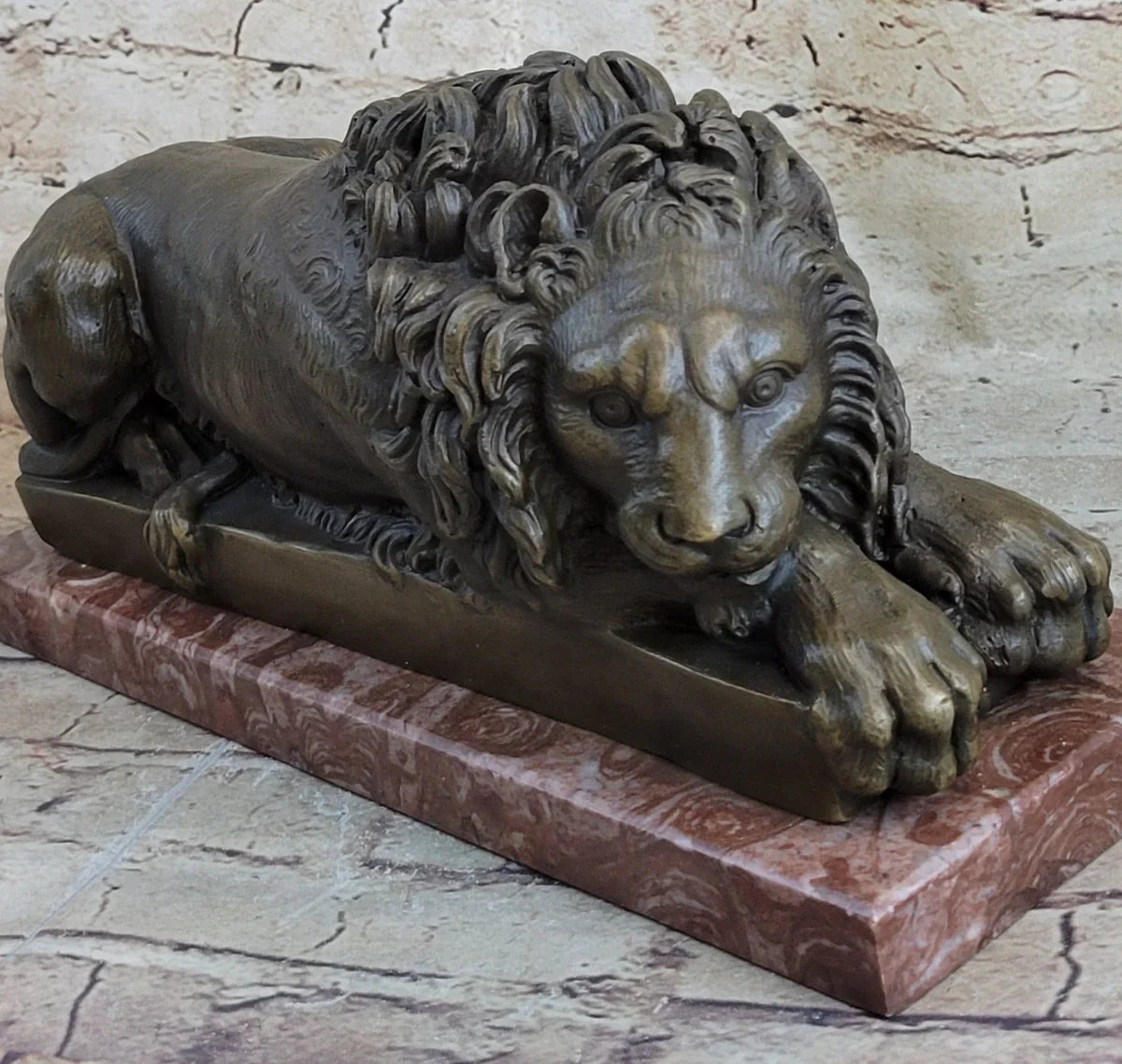Distinguishing an authentic antique bronze sculpture from a reproduction or imitation is akin to embarking on a captivating detective journey through the annals of art history. Such sculptures bear the weight of time, culture, and artistic craftsmanship, each telling a unique story of the past. However, in the realm of antiques, authenticity is a treasure, and recognizing it is a pursuit that demands a discerning eye and a deep understanding of the medium.
This article aims to unravel the enigmatic world of antique bronze sculptures, offering insights, tips, and techniques to help you navigate the complexities of identifying genuine artworks. As we delve into the nuances of patinas, signatures, provenance, and casting methods, you'll find that the path to identifying an authentic antique bronze sculpture is a journey of both knowledge and passion.
Identifying an Authentic Antique Bronze Sculpture

The world of antique bronze sculptures is a captivating blend of art, history, and craftsmanship. Authenticity is the golden thread that weaves through this realm, making it a pursuit of knowledge, discernment, and passion. Here's a comprehensive guide on how to identify genuine antique bronze sculptures:
1. Material and Patina
Bronze Composition: True bronze sculptures are typically made of a copper-tin alloy. Familiarize yourself with the appearance and weight of genuine bronze to discern it from imitations.
Patinas: Patina, the surface layer that develops over time, is a hallmark of authenticity. Genuine antique bronzes acquire unique patinas that can range from brown to green. These patinas are formed through oxidation and are challenging to replicate.
2. Signature and Markings
Artist Signatures: Look for artist signatures or foundry marks. Many renowned sculptors and foundries left their mark on their creations. Research the artist's signature styles and compare them to the ones on the sculpture.
Foundry Marks: Authentic sculptures often bear foundry marks, indicating where and by whom they were cast. These marks offer valuable clues about the sculpture's origin.
3. Provenance
Unravelling the intricate tapestry of an antique bronze sculpture's history and ownership, commonly referred to as its provenance, is an endeavour that can yield profound insights into the sculpture's authenticity and significance. Provenance serves as a bridge between the past and the present, connecting the dots of a sculpture's journey through time. It is a testament to the sculpture's existence and the lives it has touched.
One of the key facets of provenance is the documentation of previous sales and transactions involving the sculpture. As the sculpture changes hands over the years, these records leave behind a trail of breadcrumbs that, when meticulously followed, can reveal a wealth of information. A well-documented history of sales not only affirms the sculpture's existence but also attests to its desirability among collectors and art enthusiasts.
4. Casting Methods
Antique bronze sculptures were traditionally created using the lost-wax casting method. Understanding this technique, which involves creating a wax model, building a mould, and casting bronze, can help you recognize authentic works.
5. Expert Appraisals
When venturing into the intricate world of antique bronze sculptures, seeking the counsel of seasoned experts is akin to navigating with a trusty compass through uncharted waters. In this journey of artistry and history, the expertise of professionals who specialize in antique bronze sculptures becomes an invaluable beacon. These experts are the custodians of knowledge and guardians of authenticity, possessing a unique blend of trained eyes and a profound understanding of the medium.
6. Documentation and Research
Research the Artist: Learn about the artist's life, career, and artistic style. This knowledge can aid in identifying the authenticity of their work.
Documentation: Maintain records of any documentation, certificates of authenticity, or historical information related to the sculpture.
7. Condition and Wear
The authenticity of antique bronze sculptures for sale is often embedded in the compelling narrative of time itself. These sculptures, as silent witnesses to the passing years, bear the hallmarks of natural ageing that bestow upon them a unique character and authenticity. Recognizing these authentic marks is like deciphering the pages of history written in the subtle nuances of wear, patina development, and environmental effects.
8. Trust Your Instincts
Aesthetic Appeal: Finally, trust your own aesthetic judgment. Authentic antique bronze sculptures often exude a unique charm and artistic quality that sets them apart from imitations.
The process of identifying an authentic antique bronze sculpture is both a journey and an art in itself. It involves developing a keen eye, gathering knowledge, and paying homage to the craftsmanship and history embodied in these timeless works of art. By following these guidelines and seeking expert advice when in doubt, you can confidently navigate the world if you want to buy antique bronze sculptures and celebrate their enduring beauty and cultural significance.
The Final Thought

In the intricate quest to identify authentic antique bronze sculptures, we have embarked on a journey through the pages of history, artistry, and craftsmanship. It is a journey that is as much about the heart as it is about the mind, for authentic antique bronze sculptures for sale are not just relics of the past; they are embodiments of the creative spirits and cultural legacies that have shaped our world.
By delving into the subtleties of patinas, scrutinizing signatures, tracing provenance, and understanding the nuances of casting methods, we have uncovered the keys to distinguishing genuine works of art from imitations. This knowledge empowers us to preserve the authenticity and legacy of these bronze masterpieces. As guardians of art's heritage, we embrace the responsibility to cherish, protect, and celebrate these exquisite sculptures, for they are the voices of the past that continue to resonate in our present, reminding us of the enduring power of human creativity.

